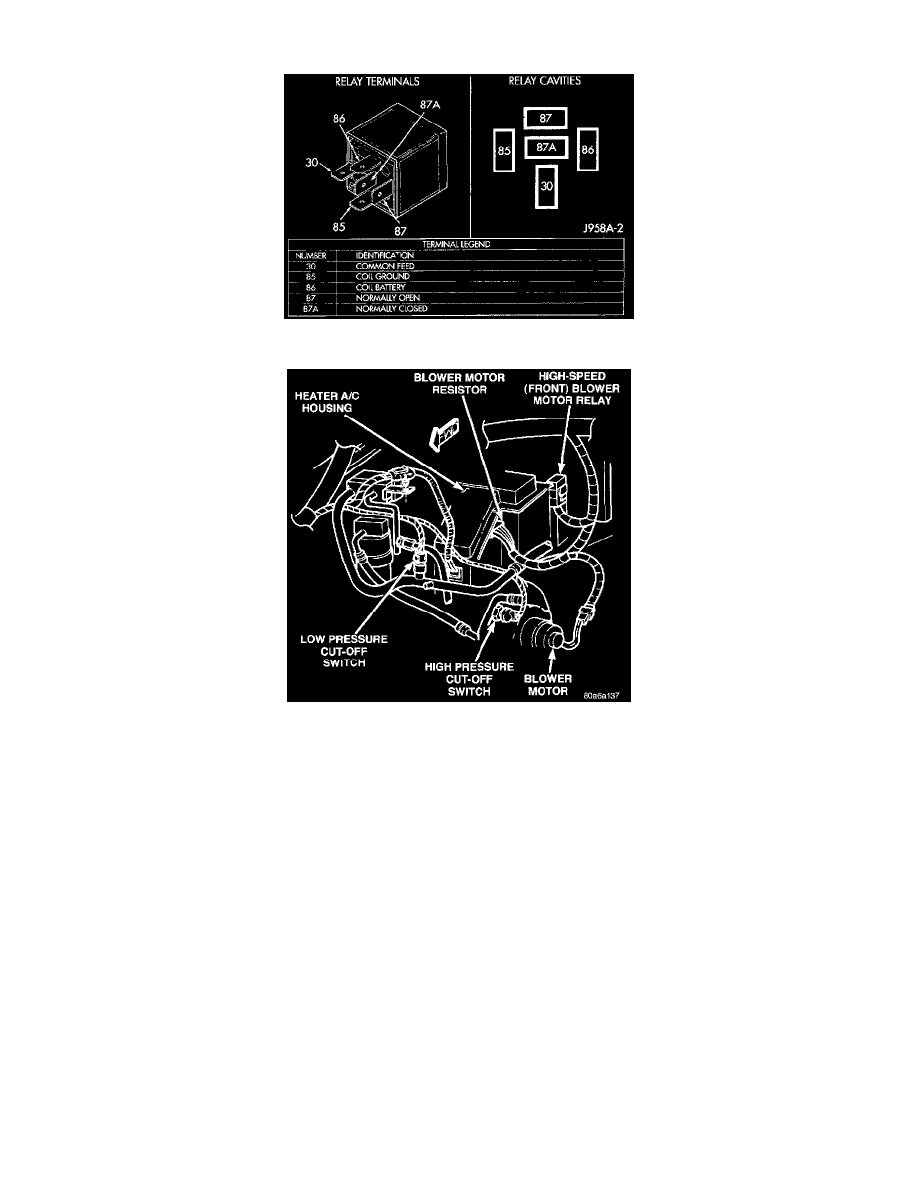RAM 2500 Van V8-318 5.2L VIN T Magnum CNG SFI (1997)

Blower Motor Relay: Testing and Inspection
Blower Motor Relay
Fig 30 High Speed (front) Blower Motor Relay
RELAY TEST
Remove the blower motor relay from its wire harness connector as described to perform the following tests:
1. A relay in the de-energized position should have continuity between terminals 87A and 30, and no continuity between terminals 87 and 30. If OK.
go to Step 2. If not OK, replace the faulty relay
2. Resistance between terminals 85 and 86 (electromagnet) should be 75 +/- 5 ohms. If OK, go to Step 3. If not OK, replace the faulty relay.
3. Connect a battery to terminals 85 and 86. There should now be continuity between terminals 30 and 87, and no continuity between terminals 87A
and 30. If OK, see the Relay Circuit Test procedure. If not OK, replace the faulty relay.
FRONT (HIGH SPEED) BLOWER MOTOR RELAY CIRCUIT TEST
1. The relay common feed terminal cavity (30) is connected to the blower motor. This terminal supplies the blower motor with fused battery feed
directly from a fuse in the Power Distribution Center (PDC) when the relay is energized, and ignition switched battery feed from a fuse in the
fuseblock module through the blower motor resistor when the relay is de-energized. There should be continuity between this cavity and the hi
blower motor driver circuit cavity of the blower motor wire harness connector at all times. If OK, go to Step 2. If not OK, repair the open circuit as
required.
2. The relay normally closed terminal cavity (87A) is connected to the blower motor resistor output. When the relay is de-energized, terminal 87A is
connected to terminal 30 and provides the blower motor resistor block output to the hi blower motor driver circuit. There should be continuity
between this cavity and the blower motor resistor block output circuit cavity of the blower motor resistor wire harness connector at all times. If
OK, go to Step 3. If not OK, repair the open circuit as required.
3. The relay normally open terminal cavity (87) is connected to a fused battery feed from the PDC. When the relay is energized, terminal 87 is
connected to terminal 30 and provides full battery current to the hi blower motor driver circuit. There should be battery voltage at this cavity at all
times. If OK, go to Step 4. If not OK, repair the open circuit to the PDC as required.
4. The coil battery terminal cavity (86) is connected to fused ignition switch output through the High speed contacts of the blower motor switch.
